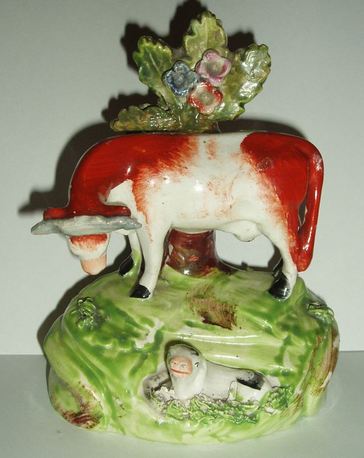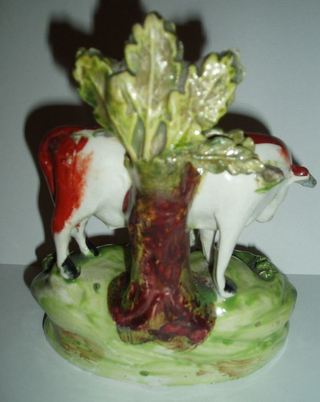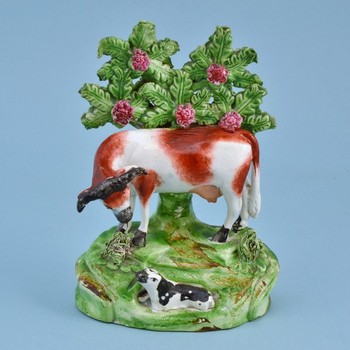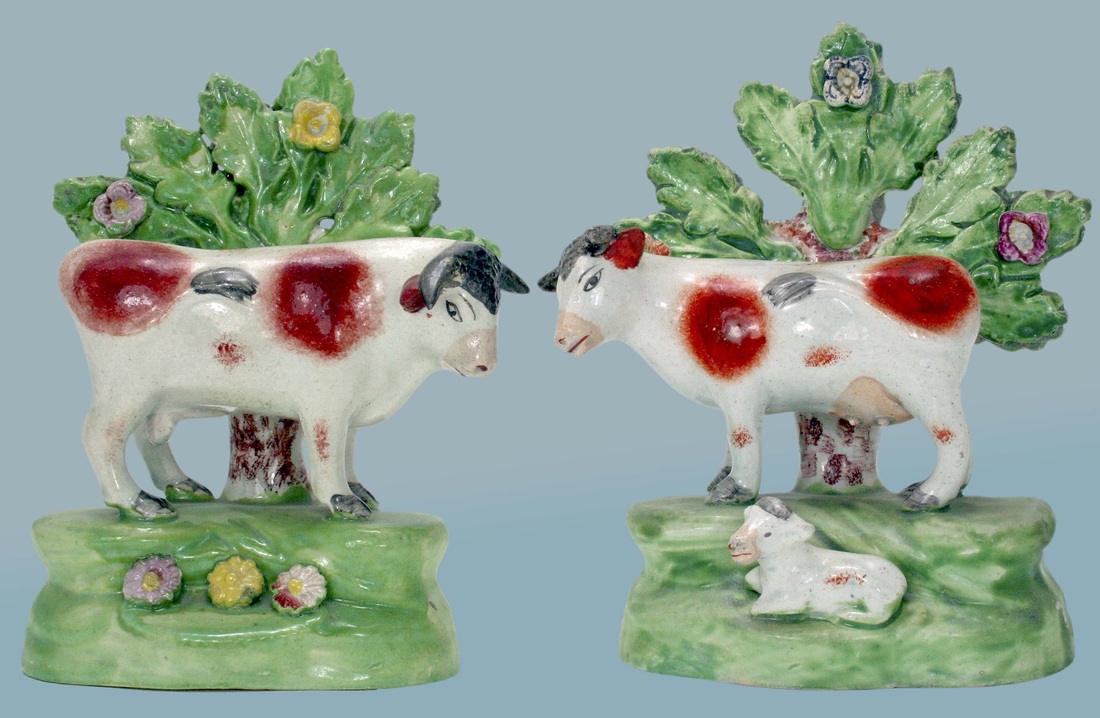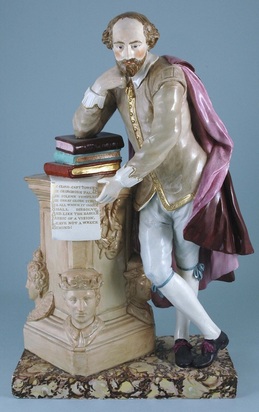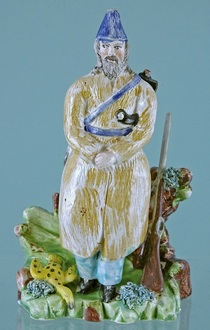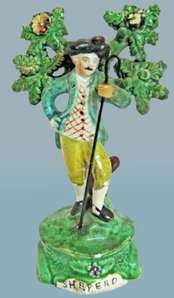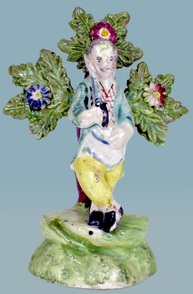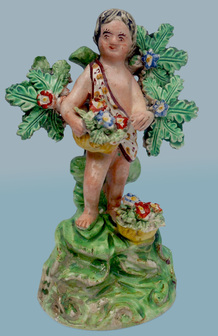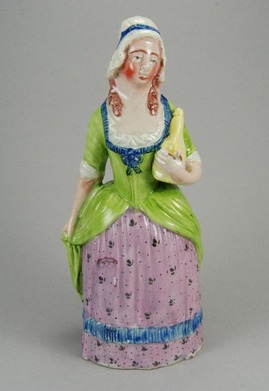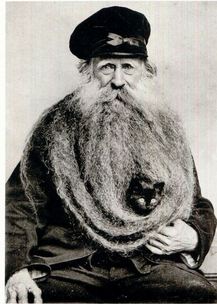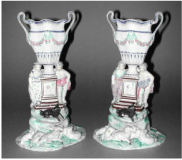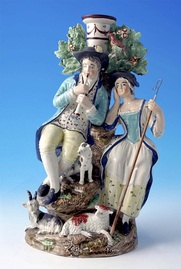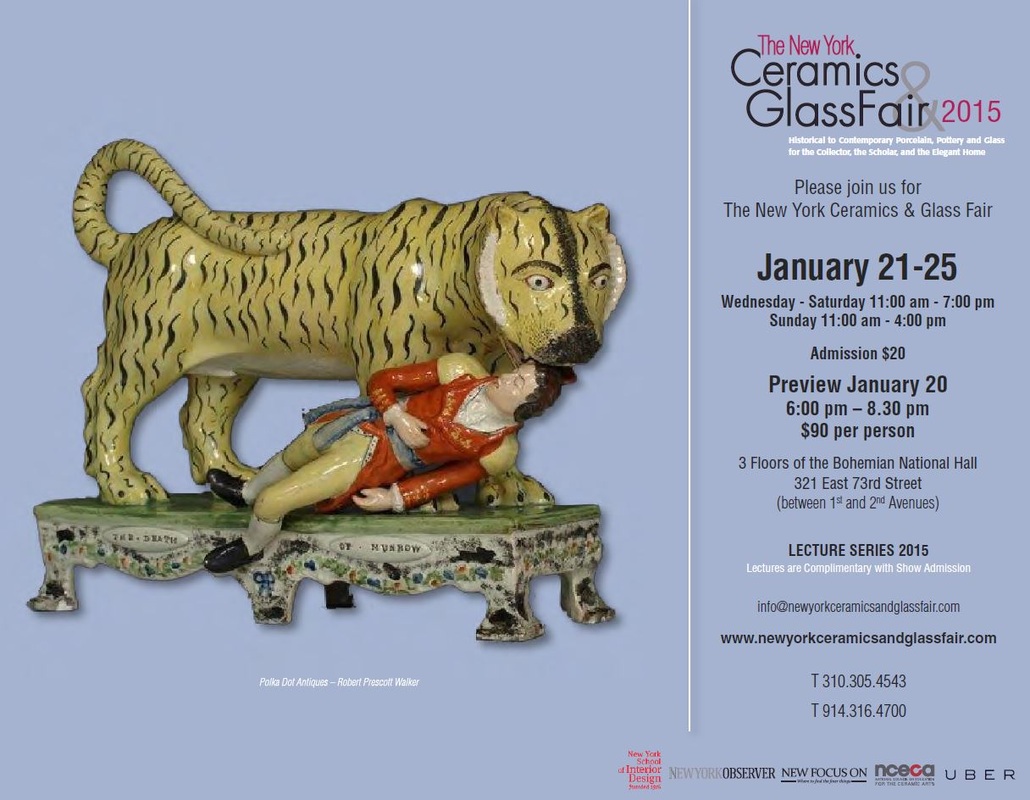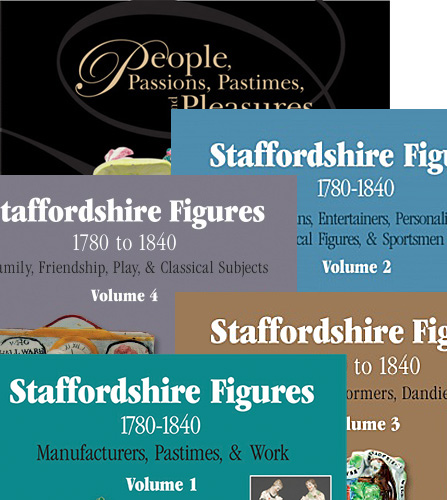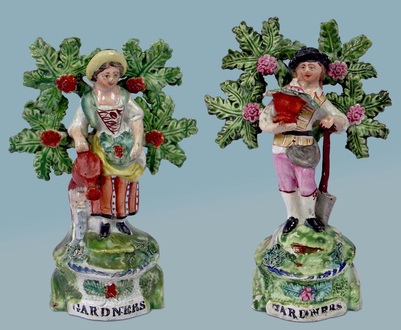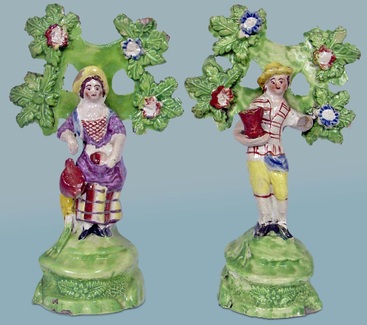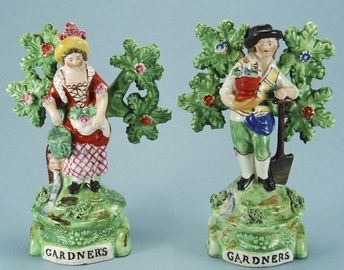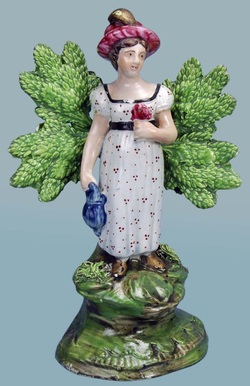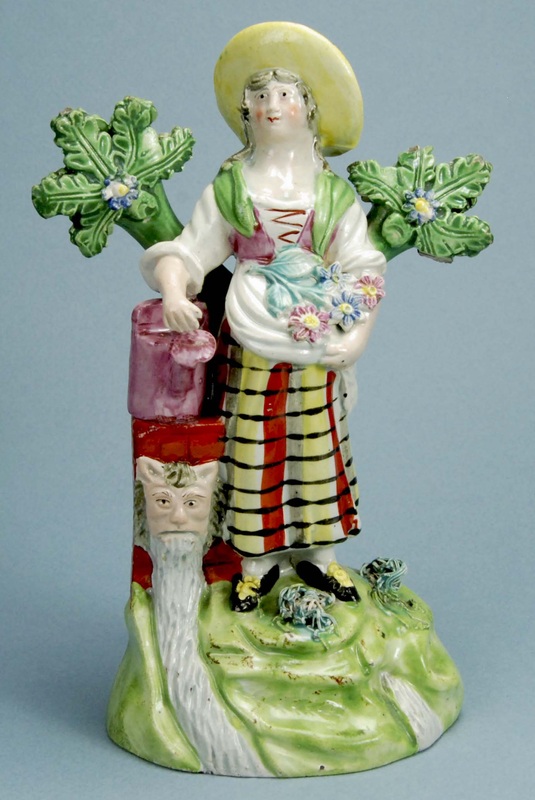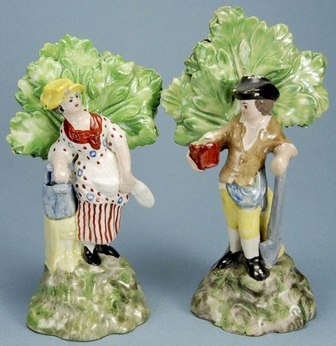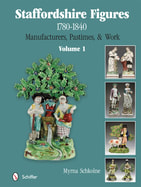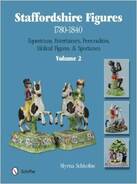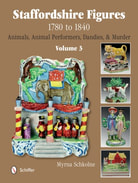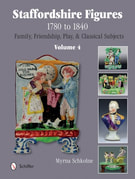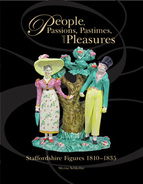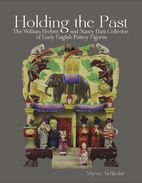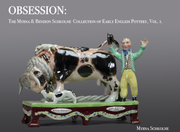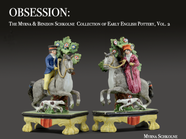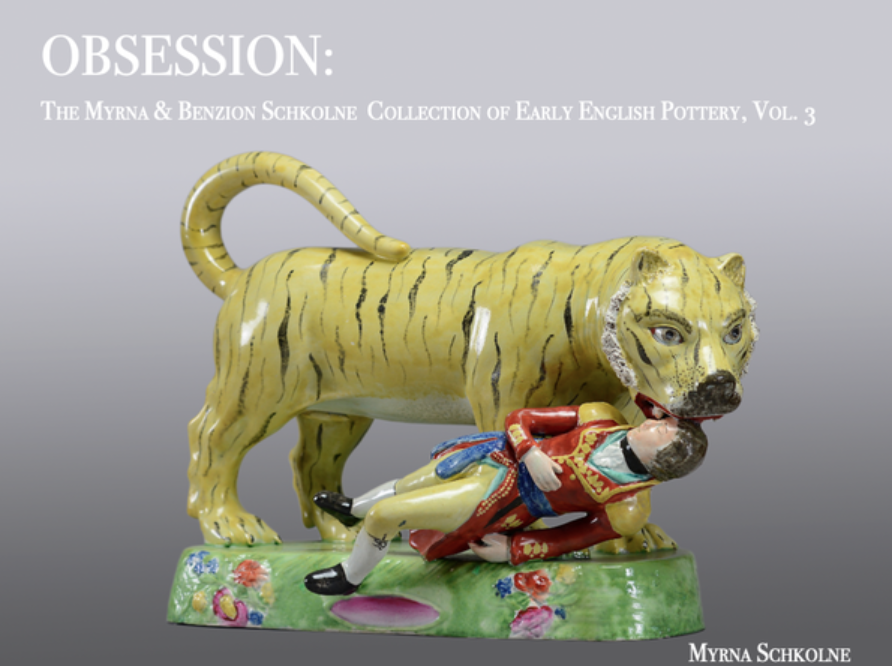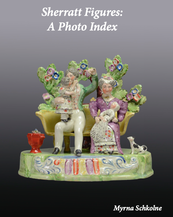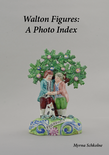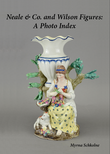This week, there is a married pearlware figure of a cow on eBay. Here the marriage of figure and bocage is so obvious and so poorly done that I didn't get any thrill out of detecting it. There is clearly something very "off" with this pearlware cow.
If you look at the cow from behind, you can see green marks to the left of the bocage. That is where the original bocage once touched the cow's back. The bocage sits awkwardly, and the restorer made up a leaf on the right side.
I am definitely not a fan of FaceBook because I have no interest in the dreary minutiae of others' lives. However, mystaffordshirefigures.com is on FaceBook, and from time to time I and others post things we find interesting on the mystaffordshirefigures group page. I posted the problem cow discussed here last week but thought it worthy of rehashing in detail here. Please join the group if you "do" FaceBook. You will find NO pictures of children, favorites plates of food, and the other clutter associated with personal FaceBook pages.
